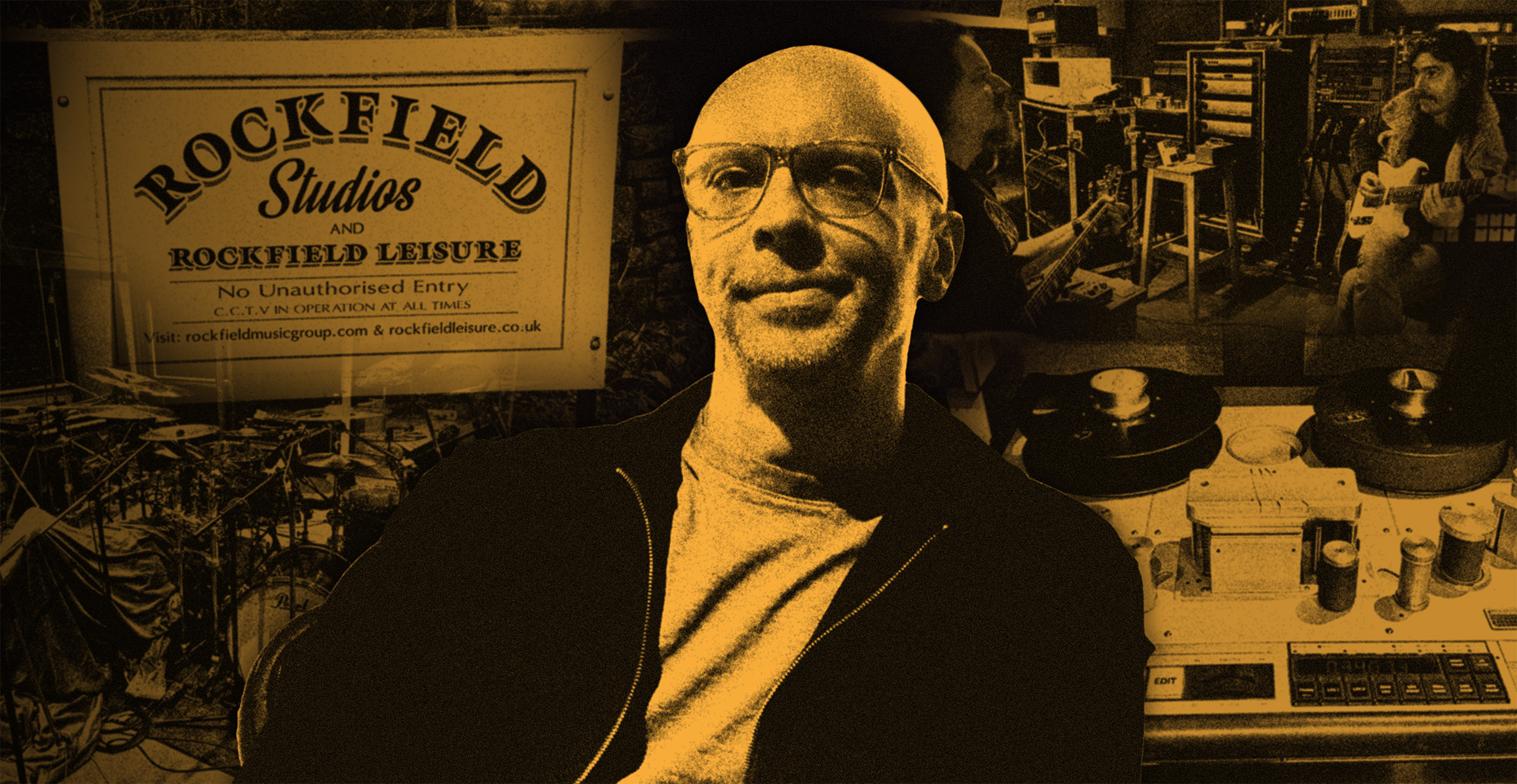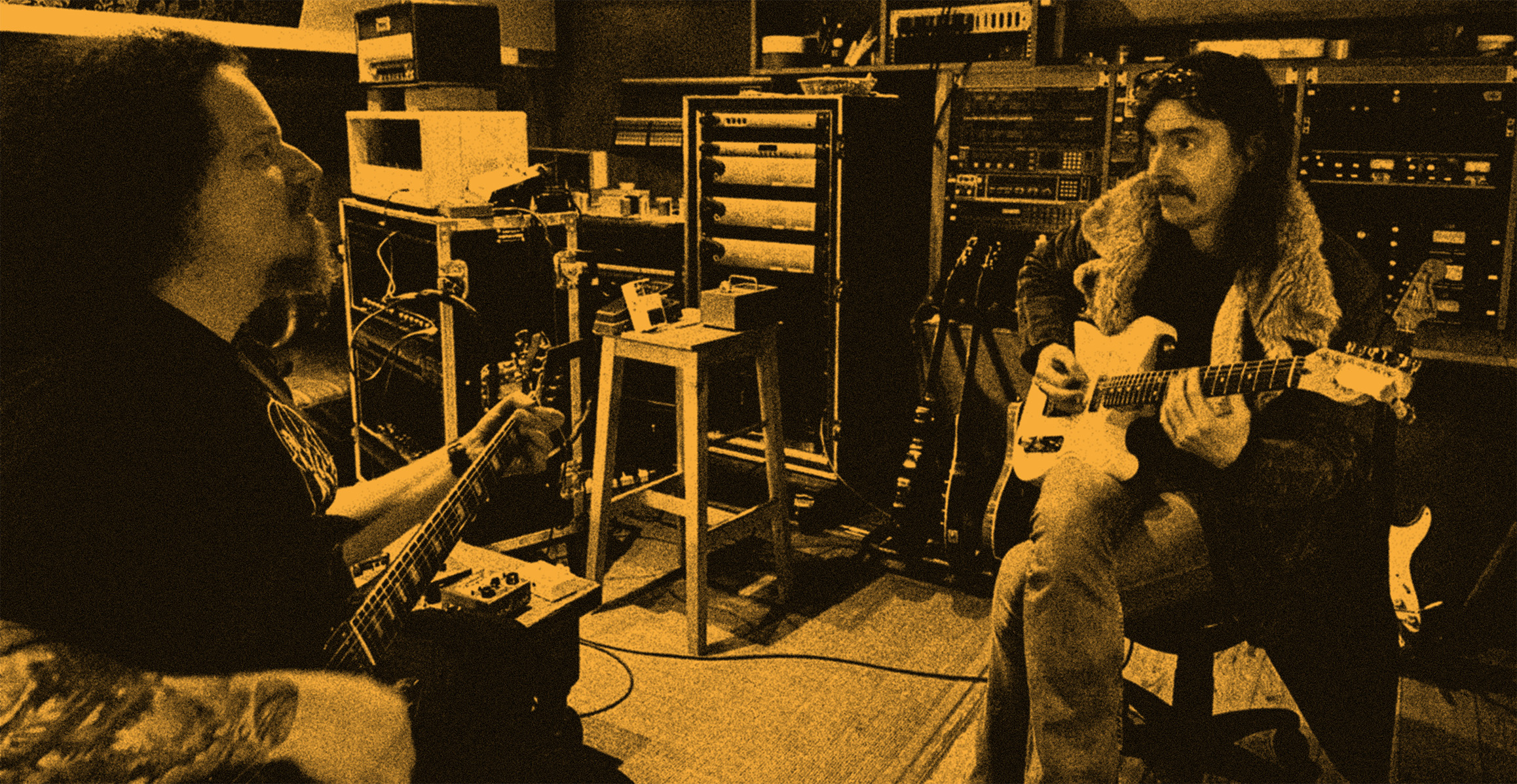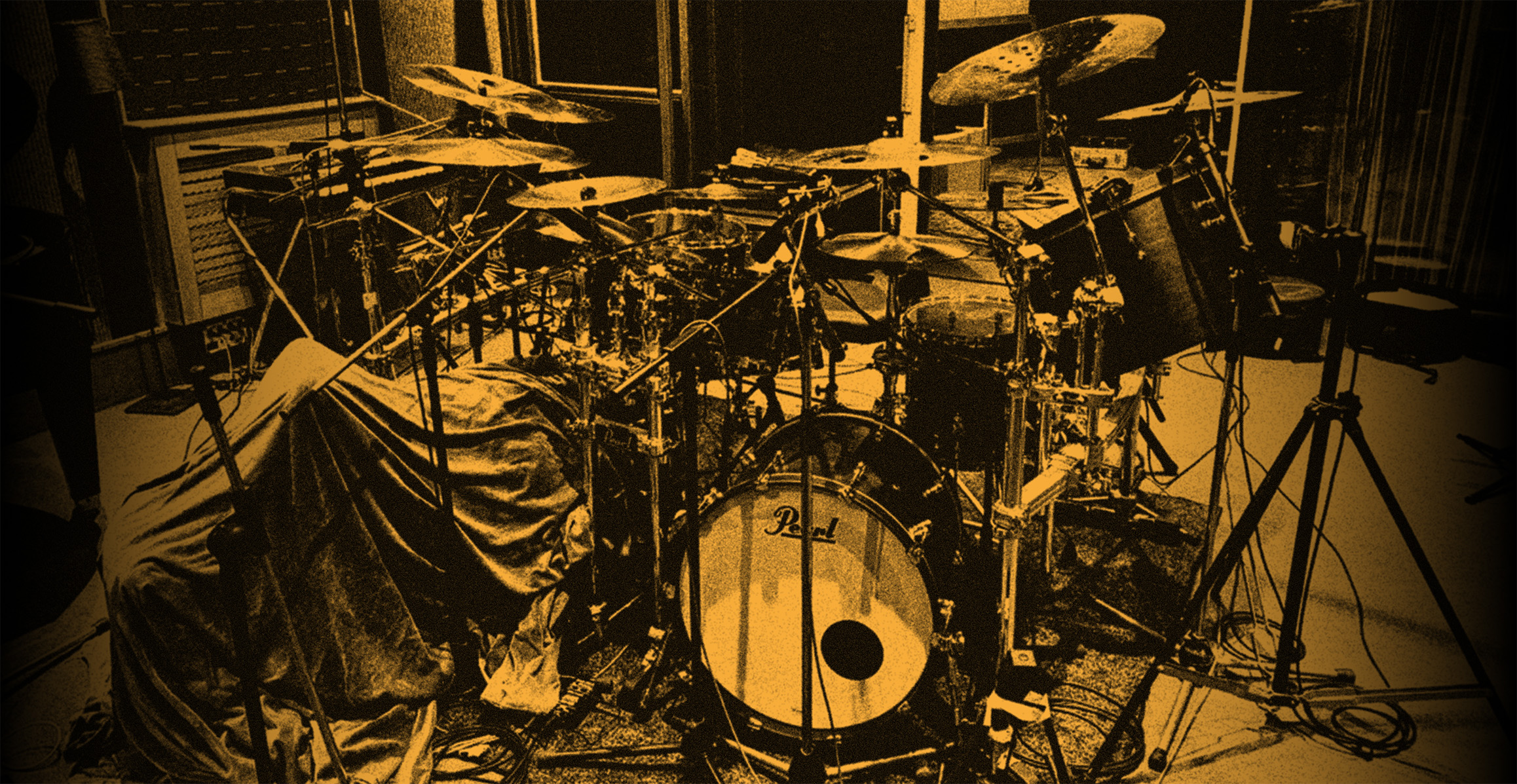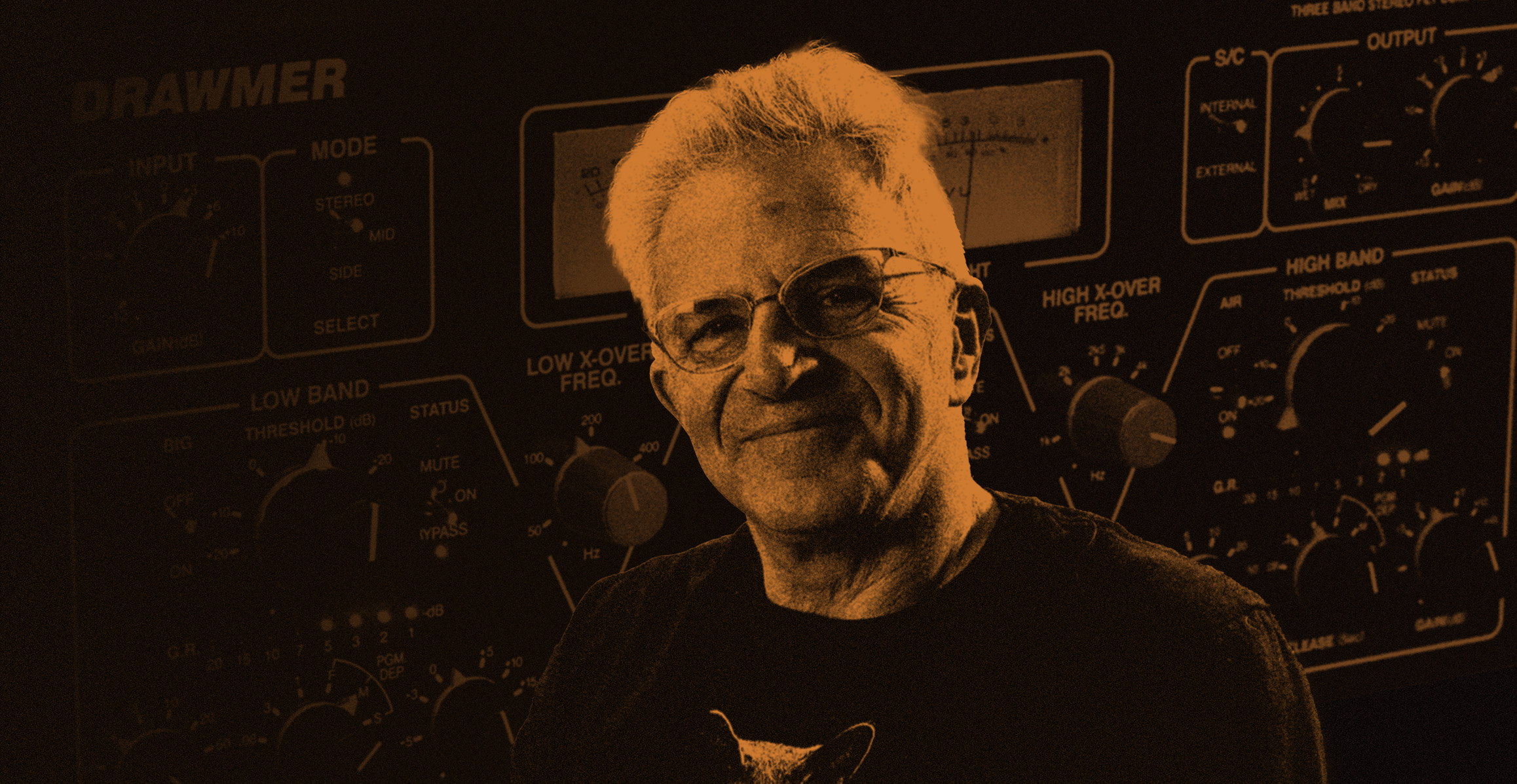OPETH AT ROCKFIELD - THE STEFAN BOMAN INTERVIEW: PART 1

OPETH AT ROCKFIELD - THE STEFAN BOMAN INTERVIEW: PART 1

Achieving the perfect mix and master is a delicate balance of artistry and technical expertise. We recently chatted with renowned mix engineer Stefan Boman, who shared insights into his work on the forthcoming “The Last Will and Testament” album by Swedish metal giants Opeth. Read on to hear how it was to record at the legendary Rockfield Studios, what Stefan's signal chains looked like, and how his innovative use of Console 1 Channel Mk III helped shape the powerful and nuanced sound of the record.
Hello, Stefan. Thanks for chatting. Could you start by telling us a bit about the background of this recording, your vision and ideas, and why you ended up recording at Rockfield Studios?
Opeth had been to Rockfield twice before and they wanted to return because it’s such an insanely cozy place. Also, everyone stays together, so there are no distractions like running off to the pub. Everyone had breakfast and dinner together, and a beer in the evening. You’re just immersed in the album the whole time. It’s nice that it is so remote. It’s literally out in the middle of a field. We stayed there for three weeks to record the album.
“It’s pretty cool that they can show you the room where Bohemian Rhapsody and Wonderwall were written.”
At first, we talked about taking a day off each week, but things were going so well that we didn’t feel the need. Micke [Mikael Åkerfeldt], the singer, and I had already discussed before going that we would do something in the mornings, either some quick exercise or a walk, so we did that every morning, and I think that was really important.
It helped clear our heads a bit, not only to wake up but also to sync up and maybe debrief from the day before. It was a great way to vent for both of us, plus getting some physical activity instead of just sitting still for ten hours a day and drinking beer in the evening. We’d go out for a 4 km run in the morning together.
They had chefs working there. So that was super nice, with dessert after every dinner. Which was almost a bit dangerous in the end, to be honest.
Rockfield is similar to your home studio Atlantis, in that so many famous artists and great albums have been recorded there. Tell us about your experience of being in such an important place in rock history for the recording of this album.
In a way, it’s always in the back of your mind because there’s so much history around everything.
But I don’t think it becomes overwhelming. I don’t think you get scared by the history, it’s more like, “Cool, but we’re doing our thing.” So, you don’t really care, but still it’s pretty cool that they can show you the room where Bohemian Rhapsody and Wonderwall were written.
What is your role in this project? Are you the producer?
I’m primarily the recording engineer and mixer but also the co-producer, so it’s more like I’m another guy who gets to have an opinion, besides the band. But Mike [Åkerfeldt] is the clear producer so everything is up to him in the end.
Was the vision for the album there from the start?
Yes. Micke and I had talked quite a lot, and he had some ideas, and maybe I nudged him in certain directions. I had an idea that the record should sound dry and hard. I wanted those contrasts, so that, when there’s a softer part, it should really stand out.
So, from the start, we had a few key points, and Micke had made very detailed demos beforehand, so we knew pretty much every little detail of what was going to be recorded. Occasionally, something new might pop up, and we’d say, “Wait, that’s cool,” but basically, we had a very good blueprint of how it was going to turn out.

How was it to work like that? Were you just ticking off tasks on a list or was there room for creativity in the moment?
Yeah, there’s not much room for spontaneous stuff, but a little bit of experimenting could happen. A little bit of playing around, experimenting with sounds and so on, overdubs. But 97% of it was pretty much set in stone, more or less, beforehand.
“It’s more about capturing the right feel, as you hear it in your head. When you’re working at home, you capture the right moment.”
Was there anything from the pre-production that made it into the final production?
All the lead vocals were done in Stockholm beforehand which was really nice as we didn’t have to spend time on that.
Also, because Mikael could record his vocals at home, we didn’t have to redo it just for the sake of it. We’ve done that on other albums, and it can be like, “The first take, you sing so well there.” And sure, maybe the mic could be 2% better, but I don’t know, it’s not that important. It’s more about capturing the right feel as you hear it in your head. When you’re working at home, you capture the first initial moment.
When you were recording the instruments at Rockfield, did the band perform any parts live in the studio? Did you record the drums first and then everything else separately?
We recorded everything separately, starting with the drums. We had such a good blueprint from the pre-production versions that were made before going to Rockfield. I don’t think the brain could handle filtering it all since the music is so complex. With bass, guitar, keyboards, and drums playing at the same time, I think it would be really easy to miss things. I don’t think I could process everything in my head and make good decisions. So, it was nice to be able to focus 100% on one thing at a time.
So, I did a lot of prepping and planning beforehand regarding mics, preamps, and compressors so I had most of that planned ahead of time. The other band members weren’t as interested in that; it was mostly up to me. Then we got a great technician at the studio who helped out.
“I did a lot of preparation beforehand and put Console 1 on all channels. That way I was able to tweak things in the monitoring stage without committing to them. You might not know exactly what you want in the end, so I like having the flexibility to experiment and change things throughout the process. That said, many of the decisions I made in Console 1 stayed throughout the whole process up to the final mix.”

We recorded in Pro Tools, which allows for adjustments if needed, as opposed to recording directly to tape. Even though we added quite a bit of EQ and compression on the way in, it was also good to have the option to tweak things in the computer later. With the drums being done, we then transferred them to a Studer tape machine and then back into Pro Tools.
I did a lot of preparation beforehand and put Console 1 on all channels. That way I was able to tweak things in the monitoring stage without committing to them. You might not know exactly what you want in the end, so I like having the flexibility to experiment and change things throughout the process. That said, many of the decisions I made in Console 1 stayed throughout the whole process up to the final mix.
It was nice to come back to Stockholm to mix and have all the settings from before. It’s interesting that you could start mixing before even hitting the record button. Also, in that stage, we could just move a mic in the studio if needed a change to the sound, instead of boosting the EQ.
We got such a good sound in the rough mix that when we started mixing for real, we all felt like we were overdoing it a bit. We went back a bit closer to how we mixed it in Rockfield.
We probably had about 85% of the mix already done from Rockfield.
“With Console 1, you can make bolder choices, which I enjoy because it means you might have to change things or rethink them during playback. ... Even though I made a lot of decisions with Console 1 in Rockfield, most of them stayed, but they could still be adjusted after the fact.”
Talking about signal chains, you used Console 1 in Pro Tools, but did you use any outboard gear when you were tracking the drums?
Yes, we used a lot of outboard gear. They have a 500 series MCI console I hadn’t worked on before, so I struggled a bit with the kick and snare on the MCI board as it has a variable Q value. So, the more I boosted, the narrower the Q became, which I’m not a big fan of on drums. But I had brought some Calrec preamps, and as soon as I hooked those up, it felt more familiar, like "Okay, now I’m home."
We used those on the kick and snare and a pair of DBX 160 on those, and I had brought some PYE compressors which we used on the overhead channels, so we used quite a bit of outboard gear. There was also an old Urei 1176 that we used on some things, which was cool.
How much did you commit during the recording process? You mentioned Console 1 was involved, but how much processing and what type of processing did you do beforehand?
We committed a lot of EQ, compression and some effects but nothing too wild. I’ve had experiences mixing other people's stuff where things were recorded too boldly, thinking it was cool that it’s so heavily compressed, but then in the mix, you realize it’s too flat. So, I made choices that I knew were a bit safer, nothing too extreme. But with Console 1, you can make bolder choices, which I enjoy because it means you might have to change things or rethink them during the mix.
“It’s kind of a ‘mix as you go-approach,’ plus it’s more fun to work that way, so it sounds good all the time. You don’t have to rely on imagination to think, ‘This will be good,’ but instead, you can make sure everyone feels like, ‘This sounds awesome!’”
I like the idea of committing, but if you're working a lot in the digital domain, with all the advantages that it offers, I don’t see the point in committing too early. I like the idea of making decisions early but also being able to revisit them. Even though I made a lot of decisions with Console 1 in Rockfield, most of them stayed, but they could still be adjusted after the fact.
When I set digital settings, I’m usually cautious about changing them in the mix. I think, "Why did I do this? Was there a reason?" So, I don’t just reset everything in the mix but try to respect those early decisions. It’s a kind of half-commitment — I've made this decision, but I can still adjust it.
It’s kind of a “mix as you go-approach," plus it’s more fun to work that way, so it sounds good all the time. You don’t have to rely on imagination to think, "This will be good," but instead, you can make sure everyone feels like, "This sounds awesome!"
Could you dive into the details of the signal chains you used? On the drums, bass, and guitars, for example?
Article continued in Opeth at Rockfield: The Stefan Boman Interview – Part 2.

CONSOLE 1 FADER: A MECHANICAL ENGINEER'S POINT OF VIEW
Console 1 Fader Mk III has a lot of parts. Find out the component of the DAW controller our mechanical engineer likes best and get a behind the scenes look at the design and manufacture of the hardware from a unique perspective. From haptic feedback and analog feel to accessibility mode, Fader Mk III gives you feel and full control.

SMC 2B OR NOT 2B: THAT'S THE MULTIBAND QUESTION
Multiband compression questions? Mastering engineer and professor Jonathan Wyner has answers about multiband compressors and multiband tools. Get his thoughts and tips for how to use multiband compression in your music production in this article.